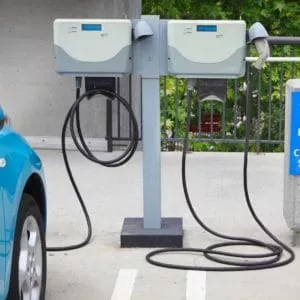
Closing the green skills gap
Published: April 13th 2022

In November of 2020, Boris Johnson set out his 10 point plan for the UK’s Green Industrial Revolution. In this plan, he detailed how we were to achieve the legally binding obligation of net zero greenhouse gas emissions by 2050.
As part of this promise, the government has a target to cut emissions by 78% by 2035, compared with 1990 levels.
2035 is a mere 15 years from now. If we consider that Sizewell C has been in talks for the last 12 years and if works were to begin as predicted by 2024 it won’t be completed until 2036 at the very earliest.
15 years is a drop in the ocean.
Various task forces have been established now to address the most pressing issues, but it is time to start acting on their recommendations.
Starting with the massive green skills gap.
Every major sector in the UK needs to close a significant skills gap to enable them to reach net zero. Looking specifically at the Infrastructure & Built Environment sectors, the most pressing areas to focus on are Power and Transport.

Power
The power sector is responsible for c11% of UK emissions, and employment is expected to increase by roughly 80,000 people by 2040. This is largely within the Offshore wind market where employment is expected to increase 170% by 2026.
Spanning wind, solar, hydropower, hydrogen, nuclear, bioenergy, carbon capture utilisation and storage (CCUS) and tidal power, the jobs most likely to be in demand are:
- Manufacturing: making renewable energy technologies, equipment and parts.
- Construction and engineering: building renewable energy infrastructure, such as offshore wind farms.
- Maintenance: repairing, refurbishing and upgrading existing renewable energy infrastructure.
- Data analysts and digital specialists

Transport
The Transport sector is responsible for 31% emissions, and it is estimated that an additional 175,000 employees will be needed by 2035.
The jobs likely to be in demand are:
- Sustainable aviation: green aerospace engineers, alternative fuel experts and hydrogen electrolysis engineers.
- Electric vehicles: charging infrastructure designers, manufacturers and operators, battery development experts, micro mobility manufacturers and regulators.
- Active travel: urban designers and city planners.
- Public transport: green bus and coach manufacturers, and rail electrical engineers.
There is an awful lot of talk about what we need to do in order to achieve net zero. What we really need to see now, is serious, sensible actions taken to make them happen.
So how can we start to reskill the Transport & Infrastructure sectors?
1. Educational Institutions
This is not a ground-breaking suggestion. The National Skills Academy for Rail was recently established to help employers, trainers and organisations develop skills. Various smaller academies in the energy market have been set up such as the X-Academy and The Green Skills Academy, but nothing government led as of yet.
And of course, there was the troubled National College of High Speed Rail which ultimately failed because it wasn’t training in the areas that businesses really needed.
For new skills institutions to succeed, the government and academia need to learn from this and work closely with businesses in the industry to determine what it is they actually need and ensure academies offer courses in those areas.
These need to be realistic courses that will result in someone getting a job today, not 10 years from now. And then as the green technology develops, the colleges will need to be adaptable enough to offer new or updated training.
2. Government action
We’ve seen a lot of task forces but we’ve not seen a lot of contracts being let to deliver change.
If we look at transport decarbonisation, there have been a handful of consultancy contracts that have recently been awarded advising public sector businesses. This is nowhere near the volume of activity that is going to be required to achieve the governments ambitious targets.
Along with feasibility studies to work out what the best solution is, the government needs to provide the incentives for the private sector to then deliver decarbonisation.
The supply chain needs to see a predictable and sustained pipeline of work to invest in skills in the skills required to deliver it. There is little incentive for companies to reskill their employees if the work isn’t there for them to win.
3. Recruit from allied sectors or International Markets
When there is a serious skills shortage in the domestic market and you don’t have time to re-train staff from scratch then there are two main options: look to other sectors or countries. Are there allied markets with transferrable skills? Are other countries more experienced in the specialist area?
Hinkley Point C (HPC) is an example of this. Sizewell B was completed in 1995. When EDF announced they wished to build HPC in 2008, a full 13 years had passed in the UK since the last new nuclear build. EDF went down the route of working closely with French supply chain companies to utilise their skills built up over years in the much larger French nuclear market on HPC. They supplemented these engineering skills with project and programme management skills from allied infrastructure markets such as rail, airports and conventional gas power stations.
There is so much that needs to be done in order to make the governments emissions targets a reality. Have you struggled to fill roles in emerging sectors, or are you considering recruiting for a role but you’re not sure the talent is out there?
Our talent mapping service allows you to map out the market to determine the potential candidate pool before you commit to a full executive search.
If this is something that interests you, please give me a call or email to discuss further.Book a 15 minute call
Author: Jim Newsom

Jim Newsom
Managing Director